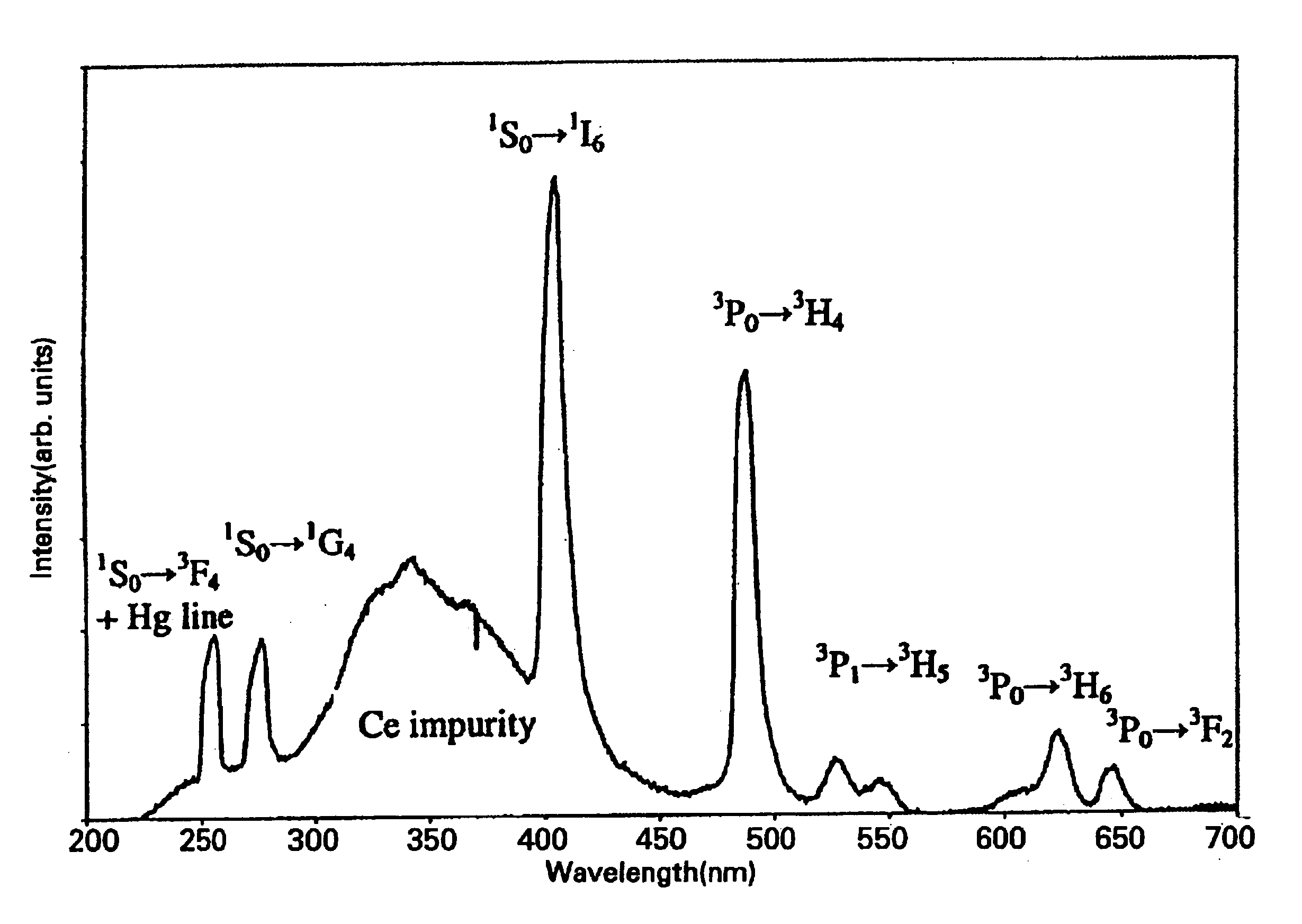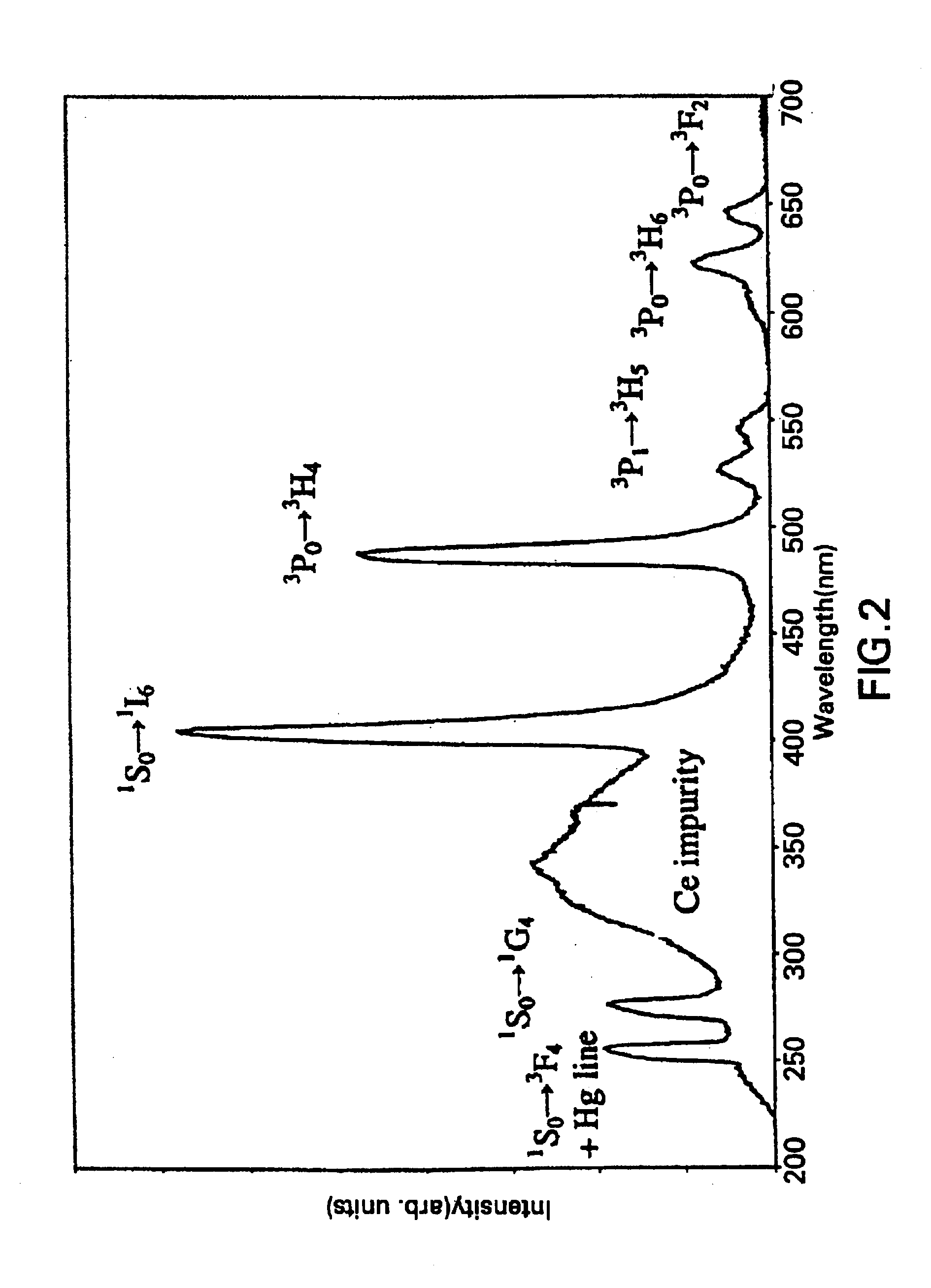Quantum-splitting oxide-based phosphors and method of producing the same
a phosphor and quantum splitter technology, applied in the field of oxide-based materials, can solve the problems of insufficient stability of fluoride-based compounds to permit their use as phosphors in fluorescent lamps, and the difficulty of producing fluoride-based materials,
- Summary
- Abstract
- Description
- Claims
- Application Information
AI Technical Summary
Benefits of technology
Problems solved by technology
Method used
Image
Examples
Embodiment Construction
calcium magnesium aluminate phosphor of the present invention having the nominal composition CaMgAl.sub.11.33 O.sub.19 :Pr.sup.3+ was produced and tested for quantum-splitting characteristic:Re following amounts of compounds of calcium, praseodymium, magnesium, and aluminum were mixed together thoroughly:
[t1]
1.35 g CaCO.sub.3
0.26 g Pr.sub.6 O.sub.11
0.60 g MgO
8.66 g Al.sub.2 O.sub.3
The mixture was fired at 1400.degree. C. for 6 hours in an atmosphere generated by the reaction products of a coconut charcoal and volatized compounds from the decomposition of the oxides and carbonates. The fired material was reblended and further heat-treated at 1100.degree. C. for 6 hours in an atmosphere of 1% (by volume) hydrogen in nitrogen to produce the phosphor.
FIG. 2 shows the room-temperature emission spectrum of this phosphor under a VUV excitation at 185 nm. The spectrum shows a large characteristic peak at about 405 nm of quantum-splitting materials due to the .sup.1 S.sub.0.fwdarw..sup.1 I.s...
PUM
 Login to View More
Login to View More Abstract
Description
Claims
Application Information
 Login to View More
Login to View More - R&D
- Intellectual Property
- Life Sciences
- Materials
- Tech Scout
- Unparalleled Data Quality
- Higher Quality Content
- 60% Fewer Hallucinations
Browse by: Latest US Patents, China's latest patents, Technical Efficacy Thesaurus, Application Domain, Technology Topic, Popular Technical Reports.
© 2025 PatSnap. All rights reserved.Legal|Privacy policy|Modern Slavery Act Transparency Statement|Sitemap|About US| Contact US: help@patsnap.com



